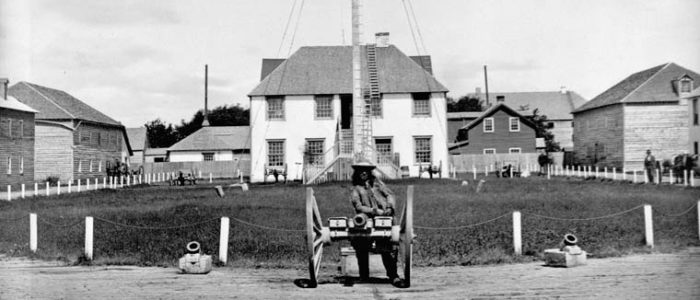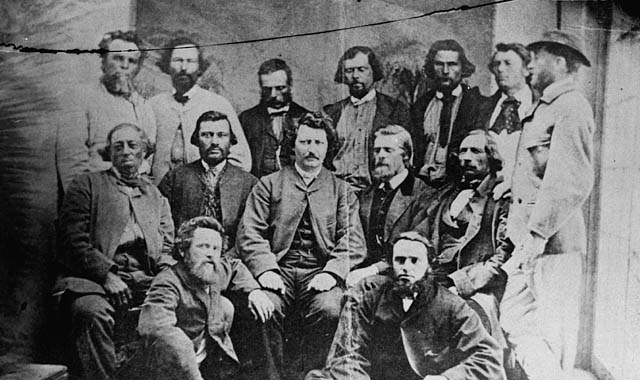Listen To This Story
Upper Fort Garry, autumn, 1869: the people who lived along the Red, Assiniboine, Seine and Sale Rivers now faced the end of Hudson’s Bay Company government. Where could they turn? Should Great Britain govern them as a colony? Should they join the United States? Should they enter the new Canadian Confederation? Should they try to go it alone?
Two sides were forming, one supporting Louis Riel and his call for a locally-elected government that would decide their future and another that considered the Métis to be rebels acting illegally.
The Métis seized control of Upper Fort Garry to take advantage of its great walls and its cannons.
For the next four and a half months, the Settlement was beset by rumours of conflict and threats of bloodshed. Three men died violent deaths.
But strong voices argued against a descent into combat. As one community leader, declared:
“We sit opposite to those who have been born and brought up among us, ate with us, slept with us, hunted with us, traded with us, and are of our own flesh and blood … I for one cannot fight them. I will not imbue my hands in their blood.”
Since that time, there had been uncertainty, three terrible deaths, and even threats of war.
Before the winter had turned to spring, 28 members of the settlement were elected by ‘the people,’ including First Nations voters and, perhaps, a few women. Those elected were known as the Legislative Assembly of Assiniboia. The majority were Métis.
They came from all parts of the community, from parish and farm and hunt. They spoke French, Michif and English, Cree and Ojibwa.
They debated. They considered. They decided.
On 24 June 1870 they voted unanimously to become part of Canada. They met within this Fort. They founded Manitoba. Their choice made possible a Canada stretching from Atlantic to Pacific. This is the legacy of the members of the Assembly who met at Upper Fort Garry.





